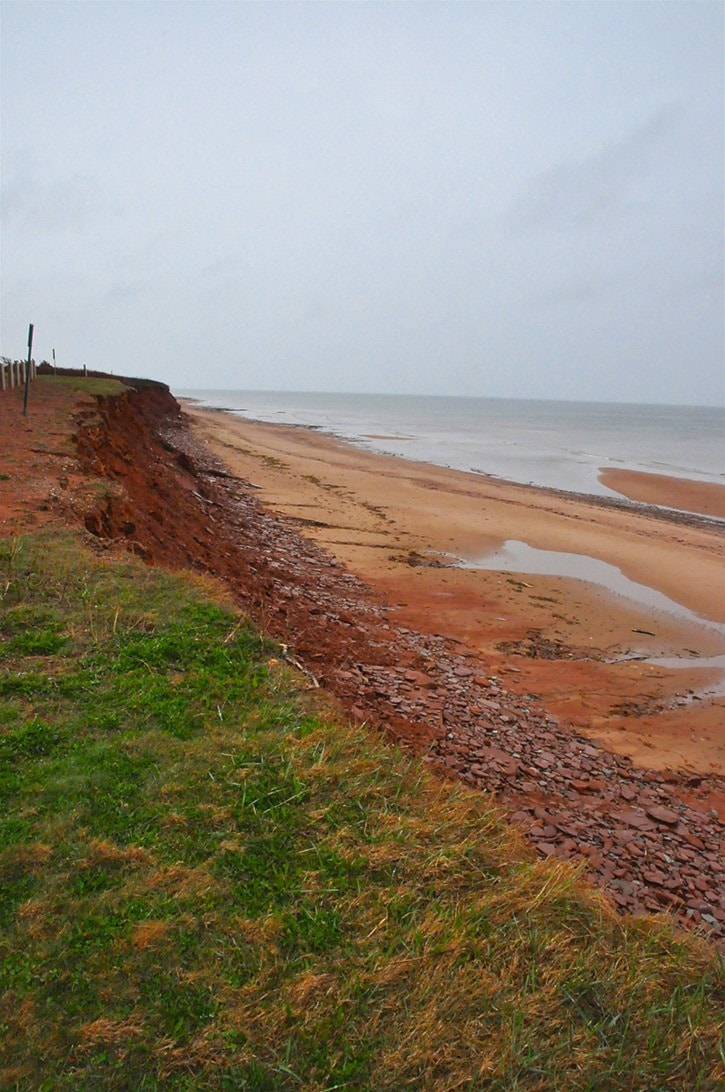PRINCE EDWARD ISLAND: The late spring day dawned gunmetal grey. Fog and rain. Not exactly a textbook touring day for my first trip to PEI.
New Brunswick friends, Margie Scott-Rogers and her husband, Jack Rogers, had generously offered to host me on a whirlwind island day-tour, thus completing my goal to visit all 10 Canadian provinces. Nunavut remains the missing link in my aim to explore all three territories.
In the spirit of Anne of Green Gables, “It’s been my experience that you can nearly always enjoy things if you make up your mind firmly that you will,” we grabbed our rain gear, departed Memramcook, New Brunswick, and hightailed it across the conveniently close Confederation Bridge.
When P.E.I. signed on for confederation on July 1, 1873, the P.E.I. Terms of Union stipulated that the federal government guarantee to operate a ferry link to the island. When Confederation Bridge, one of the world’s longest bridges, opened in 1997, the clause was deleted.
Spanning eight miles across the Abegweit Passage of Northumberland Strait between N.B. and P.E.I., it’s an impressive engineering feat, even shrouded in mist. No wonder islanders originally nicknamed it the “Fixed Link.”
I’d been advised by P.E.I. tourism via email that the island was closed for the season. To prove that we were ‘mist-ified’, and had come anyway, we paused on arrival to snap each other - as bonafide tourists do - flanked by a lofty Anne Shirley cheerfully waving to us from the inevitable well-stocked gift shop. We drew the line at ‘dressing like Anne’.
Province House National Historic Site in Charlottetown was our first stop.
Inside the imposing brick building so typical of it’s 1850 era, we admired the plush replica of the historical Confederation Chamber where the Fathers of Confederation met during the Charlottetown Conference.
Among the artifacts preserved from that time is the desk on which the document was signed. A film offered an historical overview of the area and politics of the time, which included aboriginal history and women’s issues.
Currently, Province House is a restoration project to which the federal government has allocated a total of $41 million.

Confederation Bridge seen through the fog and rain. Ursula Maxwell-Lewis
P.E.I. is known for its ‘singing sands’ and 500 miles of pristine ochre-red sandstone beaches and soil. The lobster traps, fishing boats, and colourful red and blue Acadian-inspired signage were a joy to photograph. Generated by high iron-oxide (rust) content, the red earth creates a warm, unique backdrop around this picturesque small island.
Receding showers and good light co-operated with my camera to produce those memorable, dramatic, Atlantic coast beach shots travellers dine off when they return home.
It’s little wonder that the Mi’kmaq, the Aboriginal Peoples who inhabited P.E.I. long before 16th century European explorers arrived, named the island Epekwitk, meaning Cradle on the Waves. Legends say that the god Glooscap first painted the natural beauties of the world before blending the all the colours to create Epekwitk. His heart clearly lay in this final handiwork.
Lobster and chips lured us for lunch. We chose a cafe at random and were well pleased. If you yearn for a tender fresh-caught lobster and mussel chow-down, neither P.E.I. nor New Brunswick will disappoint. Thankfully, both seafoods are highly recommended dietary products. I didn’t hesitate to dive right in.
Island roads are easy to navigate, and the countryside has rightfully earned it’s reputation for pastoral beauty. Getting sidetracked is easily understandable, but we finally arrived in the Cavendish area - just as Green Gables was closing.
In a way, the delay was fortuitous. Despite the closed farm buildings, the crowds had vanished allowing us to quickly scan the visitor’s centre before our leisurely exploration of the easily accessible grounds.
Green Gables Heritage Place was author Lucy Maud Montgomery’s inspiration for her classic Anne of Green Gables works.
Born in Clifton (now New London) in 1874, Montgomery spent much time exploring these family farmlands during the first 37 years of her life.
Green Gables, the neighbouring farm homestead, is the lynchpin in Montgomery’s universally beloved period story first published in 1908. The house is a recognized federal heritage building.
Tranquil and wooded, visitors will enjoy roaming down Haunted Wood Trail, Lovers Lane, and Balsam Wood Hollow Trail.

Entrance to the Haunted Wood Trail at Green Gables Heritage Place. Ursula Maxwell-Lewis
As Montgomery intended, the characters, landscape, and buildings encapsulate a bygone era. Peaceful, pastoral lifestyle vibes, after which many people still yearn, are frozen in time. Even on a grey day, the attraction was clear.
Building interiors, so I was told, replicate those described in the Anne of Green Gables books.
During our drive-around, the colourful, distinctive signage was noteworthy.
The vibrant, eye-catching, red and blue colours hark back to Acadian history and culture.
Friends have also recommended visiting the Lennox Island Mi’kmaq Cultural Centre, the Abegweit Pow Wow in August and the Acadian Museum in Miscouche.
Heading back over Confederation Bridge, Margie, Jack, and I agreed that nothing could rain on our parade. The day we “opened Prince Edward Island” was voted a rousing success, plus my 10-province touchdown goal was achieved in fine style and in great company.
During this Canada 150 year, I suggest you consider adding this delightful destination to your Canadian travel plans.
For more information, visit: www.parkscanadhistory.com or www.tourismpei.com.
